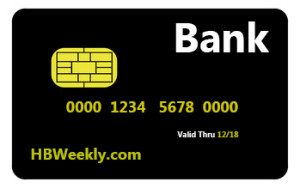October 1, 2015 is the deadline for U.S. businesses to be “chip-enabled”. Here’s what you should know about EMV technology.
Timing couldn’t be more perfect for offering a business brief. As you may already be aware, EMV (Europay, MasterCard and Visa) and the October 1st deadline (Thursday) is buzzing all over the news and internet. EMV is a global standard that has been in Europe for nearly a decade and is now active in the U.S. By now, you and your business have probably received replacement cards from your banks and credit card companies with the new card that bears a “chip” on one end. The purpose of this technology is simple… With the increase in occurrences of major data breaches and counterfeit card fraud, U.S. card issuers have transitioned to new technology in order to reduce the costs associated with fraud and protect consumers. Unlike magnetic-stripe cards, every time an EMV card is used for payment, the card chip creates a distinctive transaction code that cannot be used again. In other words, typical card duplication won’t work.
As for actual transactions, offline transactions using the EMV chip card will involve the terminal communicating with the integrated circuits. This is a change from the previous method of using telecommunications to connect to the bank. The integrated circuits/terminal connection works in real-time, verifying the cardholder and payment authorization offline. When online, the chip generates a cryptogram that is authenticated in real time for a more secure transaction using the most current information available.
So what does this mean for you and your business?
Let’s move on from the technology of it all to the more practical information. For merchants and financial institutions, the switch to EMV means adding new technology and internal processing systems to comply with new liability rules. For consumers, it means activating new cards and learning new payment processes.
Consumers – The easy part is for consumers. In short, you will need to exercise a little more patience when “dipping” your card into the terminal as it requires a live read and communication from the chip on the card. It will not be as fluid of a process as the “swipe” offered by traditional cards, but it is intended to be a safer process. Although the U.S. is distributing more contact cards, there are some merchants that may offer contactless reading technology. Contactless is even faster than a swipe as you will just be required to “tap” your card (think Apple Pay). Still not comfortable with your new card and chip yet? No worries – Credit and debit cards without chips will continue to work until they expire or until the new card is activated. The old cards will also work at payment terminals that have been updated to accommodate chips. The first round of EMV cards will be equipped with both chip and magnetic functions so both consumer and merchant have ample time to adjust to the new method and system.
Businesses – As a merchant, there is critical information about this shift that impacts your business. Although nobody is going to force you to change your equipment and credit card processing terminals, after October 1, 2015 (Mastercard and Visa – Oct. 1, 2015; American Express – Oct. 16, 2015), the “liability shift” takes place. What this means is that card-present fraud will shift from the card company/bank to the party that is least EMV-compliant. If your business has not properly updated terminals and systems, you can be held liable should a counterfeit card be used. For example, if a consumer purchases $2,000 worth of design services with a counterfeit EMV chip card, and the business does not have an EMV chip card reader for processing the transaction, the merchant will be held responsible for the $2,000. There is simply no way around it, so not having the equipment at this point is a gamble. If you decide you still want to stick with the old system, you are free to do so. You will still be able to “swipe” smart cards since they will have both a chip and magnetic strip. Just remember that your company can be held liable for any counterfeit smart card transactions.
If you accept cards through a mobile app like Square or Paypal, Square has designed EMV-compatible card readers for Android and iOS devices that can read contactless mobile payments and process chip cards. Merchants can reserve the new payment devices for $49. They are also making it easy by offering it free of charge for a limited time for qualified sellers. The PayPal chip card reader will be available this week, and they are offering rebate incentives to get merchants started.
Although the upcoming deadline is in place to push all parties to become EMV-compliant, not all companies and consumers will comply by October 1st. Larger banks like Bank of America are on the forefront of rolling out new cards, and due to the cost, smaller banks will be slower on converting their cards and systems, with debit cards falling to the back of the line. Even though the deadline is this week, don’t fret if you have not yet upgraded your system. Now that you are aware of the risks, you can begin the transition and make your credit card system safer and more secure.
HBW serves contractors and construction/design professionals in Alabama, Georgia, Texas, Florida, and Oklahoma. HBW offers the most current building trend and permitting activity reports, along with White Papers to assist in your marketing efforts. Contact us for a complimentary building data report or white paper today.

